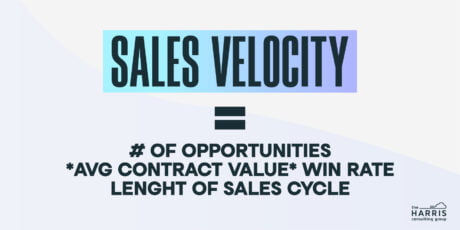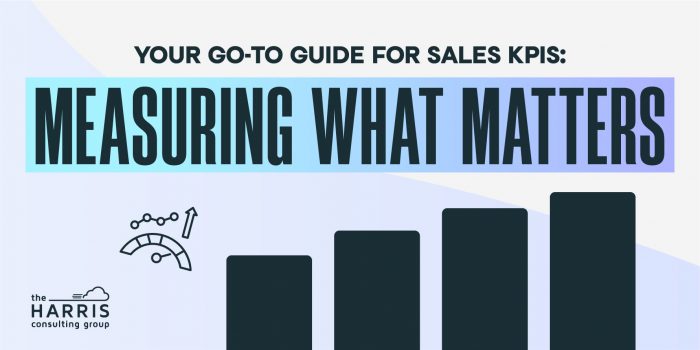Understanding and leveraging key performance indicators (KPIs) is crucial for directing your efforts toward more productive outcomes and improving your overall sales performance. These metrics serve as a compass, guiding sales professionals by highlighting their strengths, pinpointing areas that need refinement, and ultimately, paving the way for heightened success.
This guide explores the crucial KPIs that every sales professional should monitor, shining a light on how these metrics can guide you not only to reach but surpass your sales objectives. Join us as we navigate through the essential KPIs that form the foundation of an impactful sales strategy, providing you with the insights needed to boost your sales results.
With so many KPIs to measure how do you know which ones are important to you? Here are the ones we think that matters the most. And yes, depending on what stage your organization is at, they can vary.
- Net Pipeline Growth – One can only grow sales anywhere with a consistent flow of new revenue opportunities. This means there needs to be a consistent influx of opportunities into your pipeline. Too often people focus on simply a new pipeline each week. However, that is not good enough, especially these days. One must be paying attention to what is falling out of the pipeline as much as what is being added. Additionally, by focusing on Net Pipeline Growth you are encouraging best practices regarding CRM engagement.
This calculation can be done weekly or monthly depending on your average sales cycle. - Net New Opportunity Growth – Similar to Net Pipeline Growth one must pay attention to the number of opportunities being added to the CRM. It’s possible you could have a Negative Net Pipeline Growth and a positive Net New Opportunity Growth. This could indicate a number of things. Most likely your new opportunities are not large enough to achieve revenue targets. And yes, it’s also possible it will indicate some of your deals are closing as won, which is a good thing. Even in this scenario, its a wake-up call to remind you to focus on your top-of-the-funnel activities.
2. Closed Won Deals
This is the biggie—it tells you all about the cash flow coming in from your sales efforts before taking out the costs. Tracking your sales revenue is like keeping an eye on the score in a game; it helps you understand if you’re winning or need to switch up your strategy.
3. Conversion Rate
Ever wonder how effective you are at turning prospects into customers? That’s where your conversion rate comes in. It’s all about understanding how well you’re doing to convince people to say “yes” to what you’re selling. Fine-tuning your pitch can make all the difference here.
And yes, we believe it’s important to track conversions from stage to stage, not just from prospect to pipeline.
4. Staging and Aging
This is a close cousin to conversion rate tracking. Ultimately it’s about paying attention to which opportunities are stuck in certain stages. If they are stuck, then there is a good chance it’s not even a real deal, in fact, it may never have been one in the first place. Paying attention to Staging and Aging allows you to have very specific conversations with your sales team about what is real pipeline, and what is really just a closet full of nothing to wear.
5. Average Deal Size
Think quality over quantity. Knowing the average size of the deals you’re closing can help you figure out if you’re chasing the right opportunities. Sometimes, going after bigger deals can be a smarter move than trying to close a bunch of smaller ones.
6. Customer Acquisition Cost (CAC)
Let’s talk about what it costs to bring a new customer on board. Keeping an eye on this helps ensure you’re not spending more to get a customer than they’re worth in the long run. It’s all about finding that sweet spot where acquiring new customers makes good financial sense.
7. Lifetime Value (CLTV or LTV)
This is a look at the big picture of a customer’s value. It’s not just about one sale; it’s about the entire relationship you build with a customer over time. Knowing this can help you decide how much effort and resources to invest in keeping those customers happy.
8. Sales Cycle Length
Got a need for speed? Tracking how long it takes to close a deal can tell you a lot about your sales process. A shorter cycle means you’re moving fast and keeping things efficient, while a longer cycle might be a sign to rev up your approach.
8. Lead Response Time
Speed is key when it comes to responding to leads. The faster you get back to potential customers, the better your chances of making a sale. It’s all about being quick on your feet and making a great first impression.
9. Quota Attainment
This one’s a bit of a gut check. It’s about seeing how many of your team members are hitting their sales targets. It’s a great way to celebrate the wins and figure out where you might need a pep talk or a new game plan.
10. Sales Velocity
As your organization matures and you have more data one of the best KPIs is knowing your Sales Velocity. Sales Velocity is a simple calculation of the following information; Number of Opportunities, Average Deal Value, Win/Conversion Rate, Length of Sales Cycle and it looks like this.

For example, let’s say you have 100 Opportunities, $10,000 ACV, and a 20% Win Rate with a 30-day sales cycle your Sales Velocity is $6,666.66
Now, let’s change that to a 40-day sales cycle. Your Sales Velocity is now $5,000.
That’s a big deal and can directly affect your ability to hit your revenue targets.
Making KPIs Work for You
So, how do you make these KPIs work to your advantage? Here’s a quick game plan:
- Keep a Close Eye on the Data: Regular check-ins with your KPIs keep you in the know and ready to pivot as needed.
- Set Goals That Stretch You: Aim for targets that push you to grow but are still within reach.
- Tie Everything Back to the Big Picture: Your KPIs should help move the needle on your overall business goals.
- Embrace Tech Tools: Use CRM and analytics tools to make tracking these KPIs a breeze.
By tuning into these KPIs, you’ll not only get a clearer picture of where you stand but also uncover valuable insights on how to up your sales game. Remember, it’s all about learning, growing, and having a bit of fun along the way. Here’s to crushing those sales targets!







